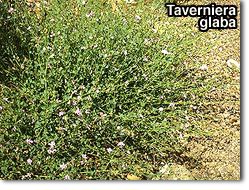 Since 1980 there have been years of drought interspersed with good rains in the winters of 1982, 1987 and 1988; but the rains of 1996 were the most copious since 1962, according to local farmers. Many people remarked that these rains must have brought out many plants, which were unknown to me. But this was not so. It was more a case of every plant being present in great abundance. Surprisingly, plants came up in places where I did not expect them: violets on dry mountain tops, Calendula arvensis at low altitudes and the parasite Orobanche cernua away from its usual hosts; in addition normally rare plants such as Silene linearis, Cleome scaposa and Ophioglossum polyphyllum were suddenly locally abundant. This unexpected profusion vividly demonstrated that thousands of seeds lie dormant for many, many years without germinating, waiting for that one season with unusual rainfall. Since 1980 there have been years of drought interspersed with good rains in the winters of 1982, 1987 and 1988; but the rains of 1996 were the most copious since 1962, according to local farmers. Many people remarked that these rains must have brought out many plants, which were unknown to me. But this was not so. It was more a case of every plant being present in great abundance. Surprisingly, plants came up in places where I did not expect them: violets on dry mountain tops, Calendula arvensis at low altitudes and the parasite Orobanche cernua away from its usual hosts; in addition normally rare plants such as Silene linearis, Cleome scaposa and Ophioglossum polyphyllum were suddenly locally abundant. This unexpected profusion vividly demonstrated that thousands of seeds lie dormant for many, many years without germinating, waiting for that one season with unusual rainfall.
But not every plant thrived during these wet months. Bleparis ciliaris was either completely vegetative or it died, Rhynchosia minima bushes looked lush but lacked flowers. I searched in vain for Cleome pruinosa, and saw only a few bushes of the otherwise relatively common Taverniera glabra. It was particularly impressive to observe the huge quantities of seeds being produced. I also noticed that many plants went through the whole cycle of germination, flowering and seeding twice in a single season. The desert flora has given me countless hours of pleasure and offered many challenges. Among these is the rediscovery of the lovely Scrophulariacea, of which I only ever found one specimen.
|

